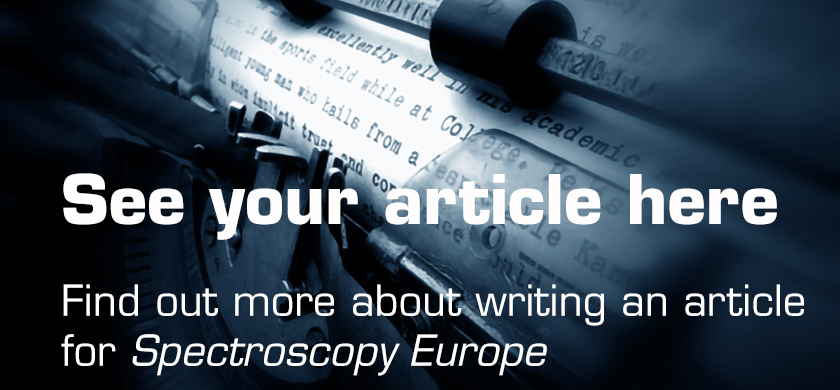Marleen de Veij,a Peter Vandenabeeleb and Luc Moensa
aGhent University, Laboratory of Analytical Chemistry, Proeftuinstraat 86, B-9000 Ghent, Belgium. E-mail: [email protected]
bGhent University, Department of Archaeology and Ancient History of Europe, Belgium
Introduction
According to the World Health Organisation (WHO), a counterfeit drug is one that is deliberately and fraudulently mislabelled with respect to identity and/or source. Counterfeiting can apply to both branded and generic products; counterfeit products may include products with correct or wrong ingredients, without active ingredients, with insufficient active ingredient or fake packaging.1 During the last decade, the amount of counterfeit drugs on the worldwide market has rapidly increased. It is difficult to determine the exact scale of this problem, since not all counterfeit drugs are reported or even detected. The drugs that are often counterfeited can be divided into two groups, depending on the region where they are brought onto the market. In developed countries, expensive life-style drugs like Viagra® and Cialis® are often counterfeited, while in developing countries, drugs to treat life-threatening illnesses like malaria are often counterfeited.
The first step in detecting counterfeit drugs is the careful visual inspection of the package and label, since even the smallest modifications may indicate a potential counterfeit. Since counterfeiters are becoming increasingly more sophisticated, additional analytical techniques are necessary to detect these counterfeits. So far, several analytical techniques have been used to detect counterfeit drugs, for instance high-performance liquid chromatography (HPLC), thin-layer chromatography (TLC), X-ray diffraction (XRD), near infrared (NIR) spectroscopy or colorimetric reactions. The downside of these methods is that they require sample preparation or that they only focus on a single component.
The use of Raman spectroscopy in the pharmaceutical field has been increasing over the last few years. Raman spectroscopy has some specific benefits, which can be very useful for the detection of counterfeit drugs: a Raman spectrum can be recorded rapidly without any sample preparation. Moreover, not only does a Raman spectrum provide information about the active ingredient present in the drug, but also a Raman spectrum contains information on its concentration and allows identification of excipients present in the drug. So far, this technique has been used for the detection of different kinds of illicit drugs, such as cocaine, heroin and ecstasy,2 and also for the detection of counterfeit antimalarial3 and Viagra® tablets.4 This article will demonstrate the use of Raman spectroscopy as a fast and easy detection system for different counterfeit erectile dysfunction drugs.
Three different genuine erectile dysfunction drugs are available on the market: Viagra®, Cialis® and Levitra®. Viagra® is the most commonly counterfeited drug, but the amount of counterfeit Cialis® has rapidly increased over the last few years. The possible counterfeits analysed consisted of two Viagra® tablets, SEYAGRA-GEL containing the same active ingredient as Viagra® and two tablets claiming to contain the same active ingredient as Cialis®.
Experimental
The Raman spectra were recorded using a Renishaw system-1000 spectrometer, which is connected to an Olympus BH-2 microscope. The diode laser has a power of 50 mW at the source and a wavelength of 785 nm. A 5× Olympus objective lens is used and the collected Raman radiation is dispersed with a 1200 lines mm–1 grating and focused onto a Peltier-cooled CCD detector. All spectra are recorded in the spectral window of 200–1800 cm–1. The recorded spectra are averaged (three per sample) and baseline-corrected with ACD/Specmanager (Advanced Chemistry Development, Inc., Ontario, Canada) to eliminate the influence of broadband fluorescence.
Results
Viagra® tablets
In Figure 1 two possible counterfeit Viagra® tablets (B and C) are compared to a genuine Viagra® tablet (A). Each is shown as a pair of photographs taken on an opposite side. Based simply on a visual inspection, tablet C clearly shows differences to the genuine one. The Pfizer logo is lacking and the amount of active ingredient is mentioned as “50 mg” instead of “VGR 50”. The Raman spectra of the two possible counterfeits and the genuine Viagra® are shown in Figure 2. The three Raman bands of (anatase) titanium dioxide (TiO2),5 at 394, 513 and 634 cm–1 and the Raman bands of the active ingredient (sildenafil citrate),4 at ca 1580, 1528, 1401, 1236 cm–1 are present in the three Raman spectra. However, the Raman spectra of the two possible counterfeits contain an additional Raman band at 980 cm–1, which can be assigned to barium sulfate (BaSO4).4
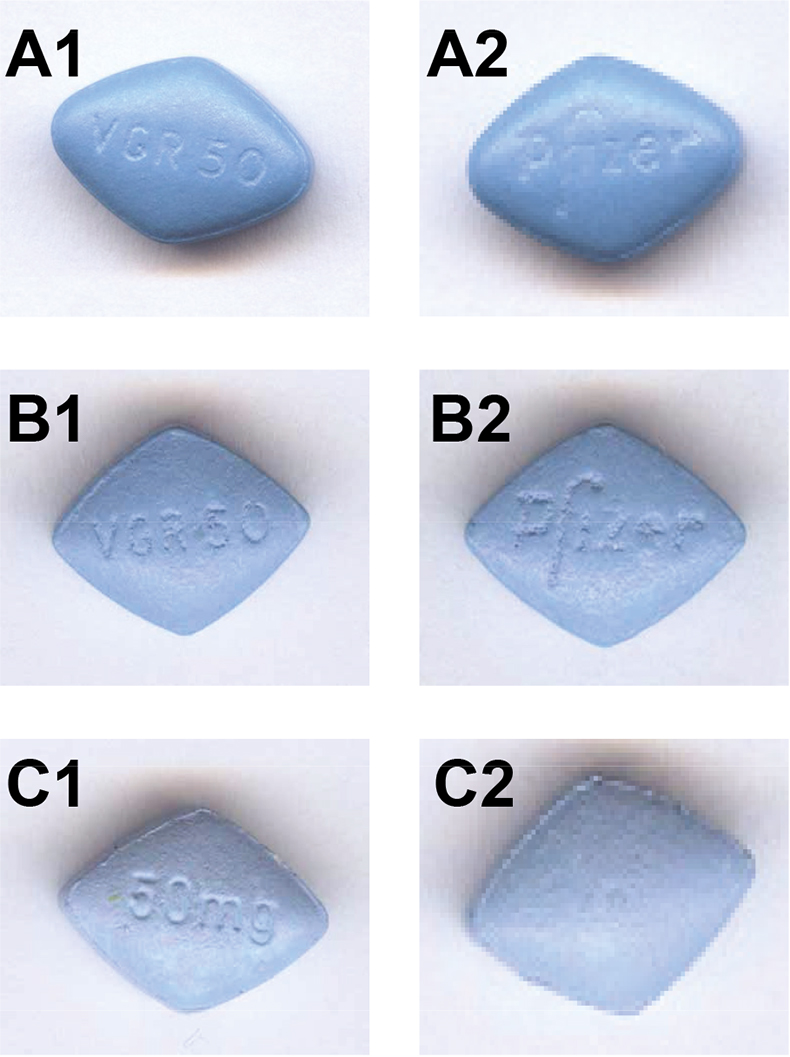
Figure 1. Photographs of both sides of the genuine Viagra® tablet (A) and two possible counterfeits (B and C).
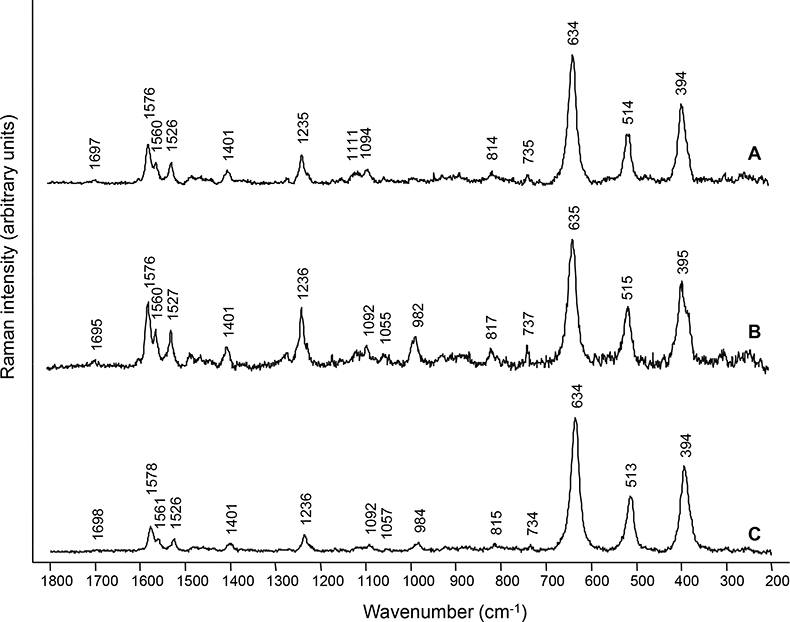
Figure 2. Raman spectra of genuine Viagra® tablet (A) and two possible counterfeit tablets (B and C): 5× objective, 200–1800 cm–1, 785 nm laser wavelength, after baseline correction, 25 accumulations of 30 s.
Seyagra gel
According to the manufacturer of Seyagra gel (Figure 3), the gel contains the same active ingredient as Viagra® (sildenafil citrate). Figure 4 shows the Raman spectra of sildenafil citrate (A) and the Seyagra gel (B). The Raman bands of sildenafil citrate can be easily be recognised, but some additional bands are present as well (1394, 1154, 1109, 1021, 708, 652, 553, 278 and 234 cm–1), which are probably due to the gel-composing agents.
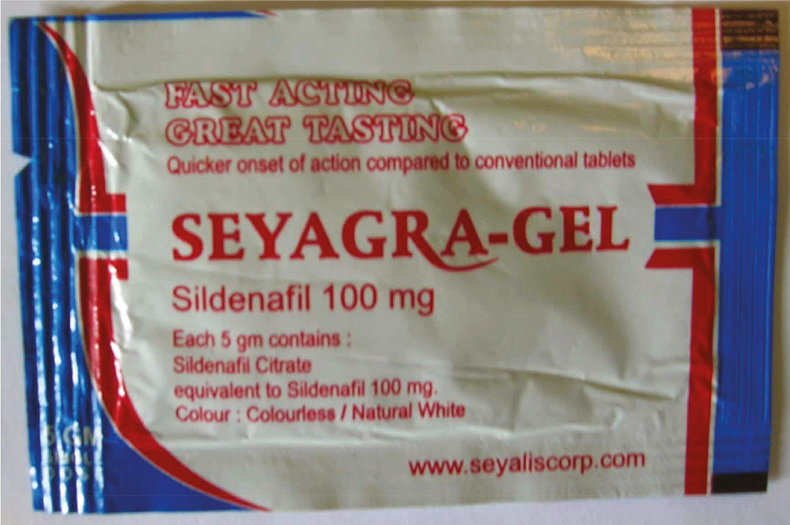
Figure 3. Photograph of the SEYAGRA-GEL.

Figure 4. Raman spectra of sildenafil citrate (A) and Seyagra gel (B): 5× objective, 200–1800 cm–1, 785 nm laser wavelength, after baseline correction, 20 accumulations of 30 s.
Cialis® tablets
Visual inspection of the counterfeit tablets shows a clear difference in appearance compared to genuine Cialis® (Figure 5). The manufacturer of these tablets claim that the tablets have the same active ingredient as genuine Cialis®, namely tadalafil. Figure 6 shows the Raman spectra of genuine Cialis® and the two seized tadalafil tablets.
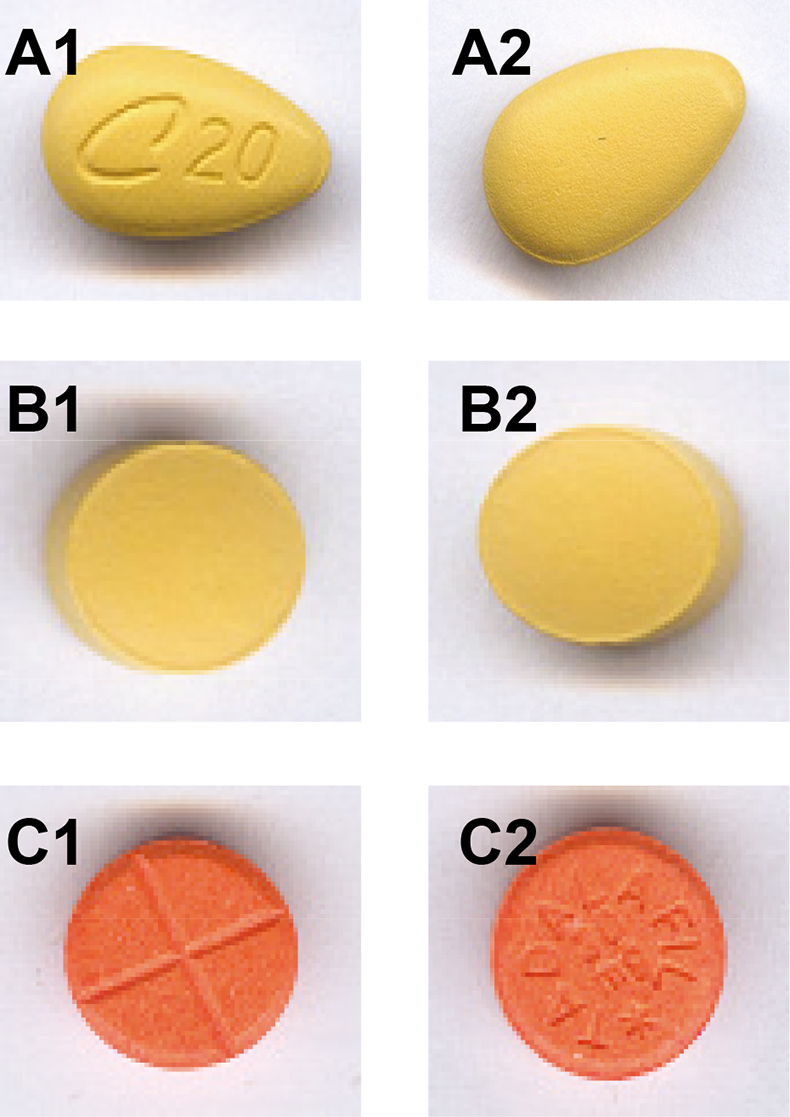
Figure 5. Photographs of both sides of the genuine Cialis® tablet (A) and two possible counterfeits (B and C).

Figure 6. Raman spectra of genuine Cialis® tablet (A) and two possible counterfeits (B and C): 5× objective, 200–1800 cm–1, 785 nm laser wavelength, after baseline correction, 25 accumulations of 30 s.
Differences can be noted between the Raman spectra presented in Figure 6. The three Raman bands of titanium dioxide5 are only present in the genuine Cialis® tablet (Figure 6A) and one of the possible counterfeits (Figure 6B). However, the ratio of the intensities of the active ingredient (1593 cm–1) and titanium dioxide differs significantly. In the genuine Cialis®, the ratio is ca 1 : 25, while in tablet B the ratio is ca 1 : 7, indicating a lower amount of titanium dioxide compared to the active ingredient.
Second, the Raman bands of lactose6 at 353 cm–1 and 474 cm–1 are observed to be present in the three Raman spectra. However, the ratio between these two Raman bands differs significantly in both counterfeits (1 : 1 for B and 1 : 3 for C) compared to the genuine Cialis® (2 : 1). The increase of the relative intensity of the Raman band at 474 cm–1 can be attributed to starch.4 The second counterfeit tablet (Figure 6C) also contains the Raman band of barium sulfate4 at 984 cm–1.
Conclusions
Based on a simple visual examination of the drugs, only a few counterfeits could be detected, which illustrates that counterfeiters are becoming increasingly sophisticated. Based on the analyses with Raman spectroscopy, all spectra of the Viagra® tablets, the Seyagra gel and the Cialis® tablets show the distinctive Raman bands of the correct active ingredient.
When focusing on the Cialis® and Viagra® tablets, differences can be noted between the Raman spectra of the genuine and possible counterfeit tablets. These Raman spectra show additional Raman bands of excipients and/or have different ratios of ingredients in the tablets. Based on these differences the Cialis® and Viagra® tablets can be considered counterfeit. This research shows that Raman spectroscopy can be used as a fast and easy detection system for counterfeit drugs.
References
- WHO, Fact Sheet No. 94, May (2007).
- S.E.J. Bell, D.T. Burns, A.D. Dennis and J.S. Speers, Analyst 125, 541–544 (2000). https://doi.org/10.1039/a908091k
- M. de Veij, P. Vandenabeele, K. Alter Hall, F.M. Fernandez, M.D. Green, N.J. White, A.M. Dondorp, P.N. Newton and L. Moens, J. Raman Spectrosc. 38, 181–187 (2007). https://doi.org/10.1002/jrs.1621Anal. 46, 303–309 (2008). https://doi.org/10.1016/j.jpba.2007.10.021
- S.J. Rigby, A.H.R. Al-Obaidi, S.K. Lee, D. McStay and P.K.J. Robertson, Appl. Surf. Sci. 252(22), 7948–7952 (2006). https://doi.org/10.1016/j.apsusc.2005.10.003
- B.M. Murphy, S.W. Prescott and I. Larson, J. Pharm. Biomed. Anal. 38(1), 186–190 (2005). https://doi.org/10.1016/j.jpba.2004.12.013

